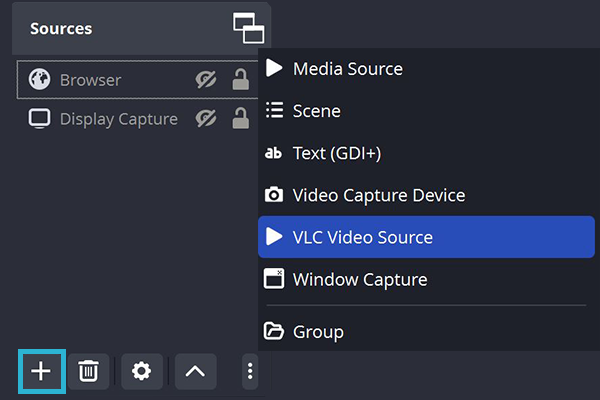No products in the cart.
Black Friday Sale. 35% Off Everything

Playing a VLC playlist in OBS is an optimal method for establishing “always live” streams or for organizing a range of pre-recorded content such as a music to play during broadcasts. This guide will begin with a clear tutorial on configuring your VLC playlist to play in OBS. Afterward, we’ll address common setup challenges and their remedies. Whether you’re unfamiliar with VLC or seeking solutions to particular problems, rest assured: we’ve rigorously tested the VLC source within OBS to offer you the most reliable insights.
Whethere you’re looking to add a music playlist or video playlist within OBS the most efficient way of doing this is via the VLC source in OBS. The following steps will guide you through this process.
If OBS was open during the VLC installation, restart it.


Click ‘Ok’. With the source enabled, your playlist will start playing.
When setting up a VLC playlist in OBS, it’s common to find that there’s no VLC source available to add. This often arises when OBS can’t locate your VLC installation. Follow these steps to identify and resolve the issue:
Use the Find function (Ctrl + F) and search for “VLC”. If there’s an issue, you’ll likely spot an error related to VLC.

Download the corresponding version of VLC, ensuring you select the right bit version from the download options.

These steps should help in resolving the VLC source issue in OBS.
If you notice the VLC Video source audio is active in the mixer but not audible in the stream, it’s likely muted. To fix:
Click the three dots next to the VLC Video source.

Set the “Audio Monitoring” for the VLC Source to “Monitor Off.”

A prevalent issue that remains unresolved involves the audio cutting off 3 seconds before a video concludes and transitions to the next. Despite being documented for several years, a solution has not been identified.
Utilizing a VLC playlist in OBS is a powerful tool for streamers, but like all technical endeavors, it can come with challenges, such as the no audio issue. This article has provided clear steps for setup and solutions to the most common problems streamers face using the VLC source. With these solutions you should be up and running smoothly, playing playlists to your heart’s content.
© 2025 Hexeum. All rights reserved